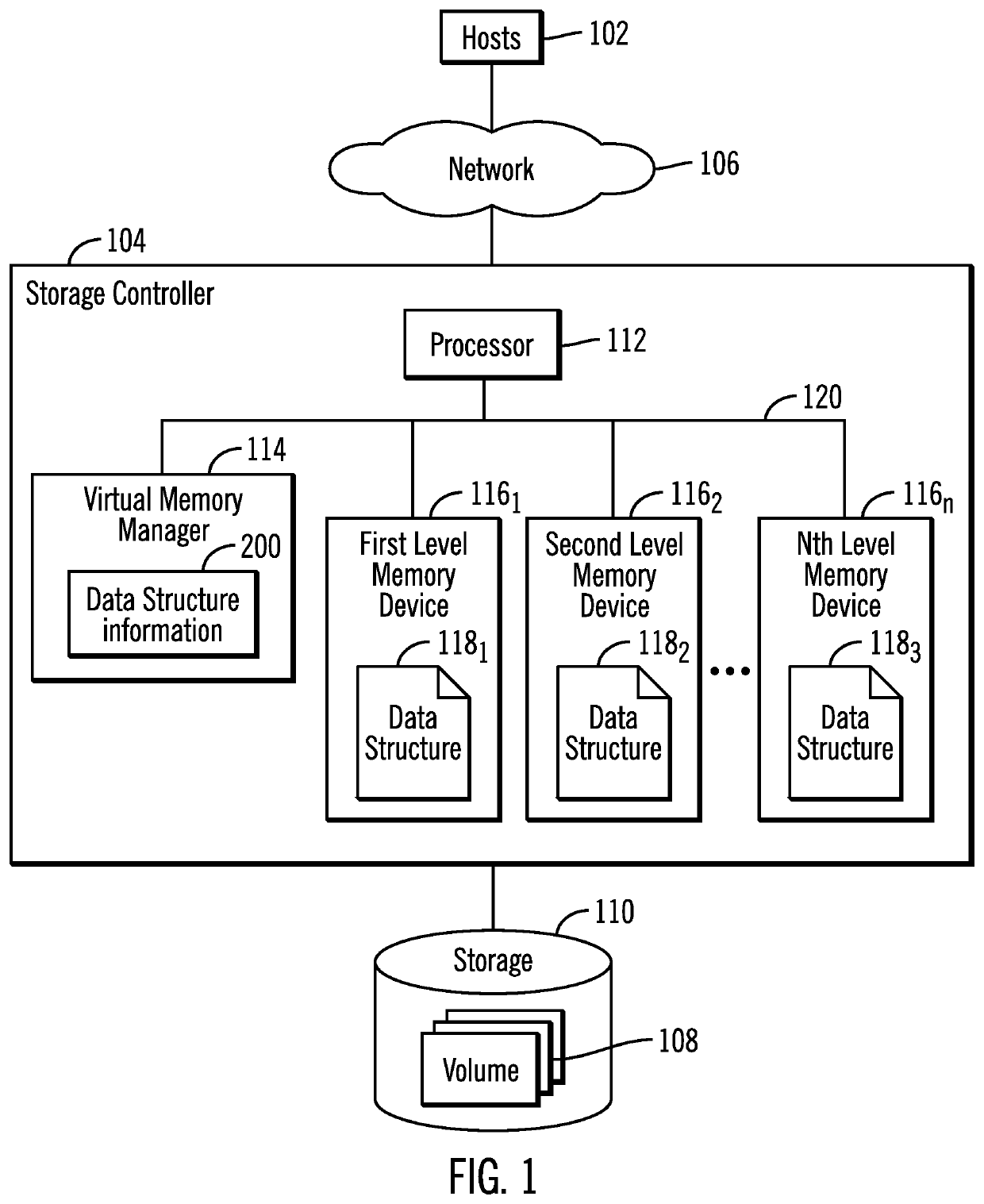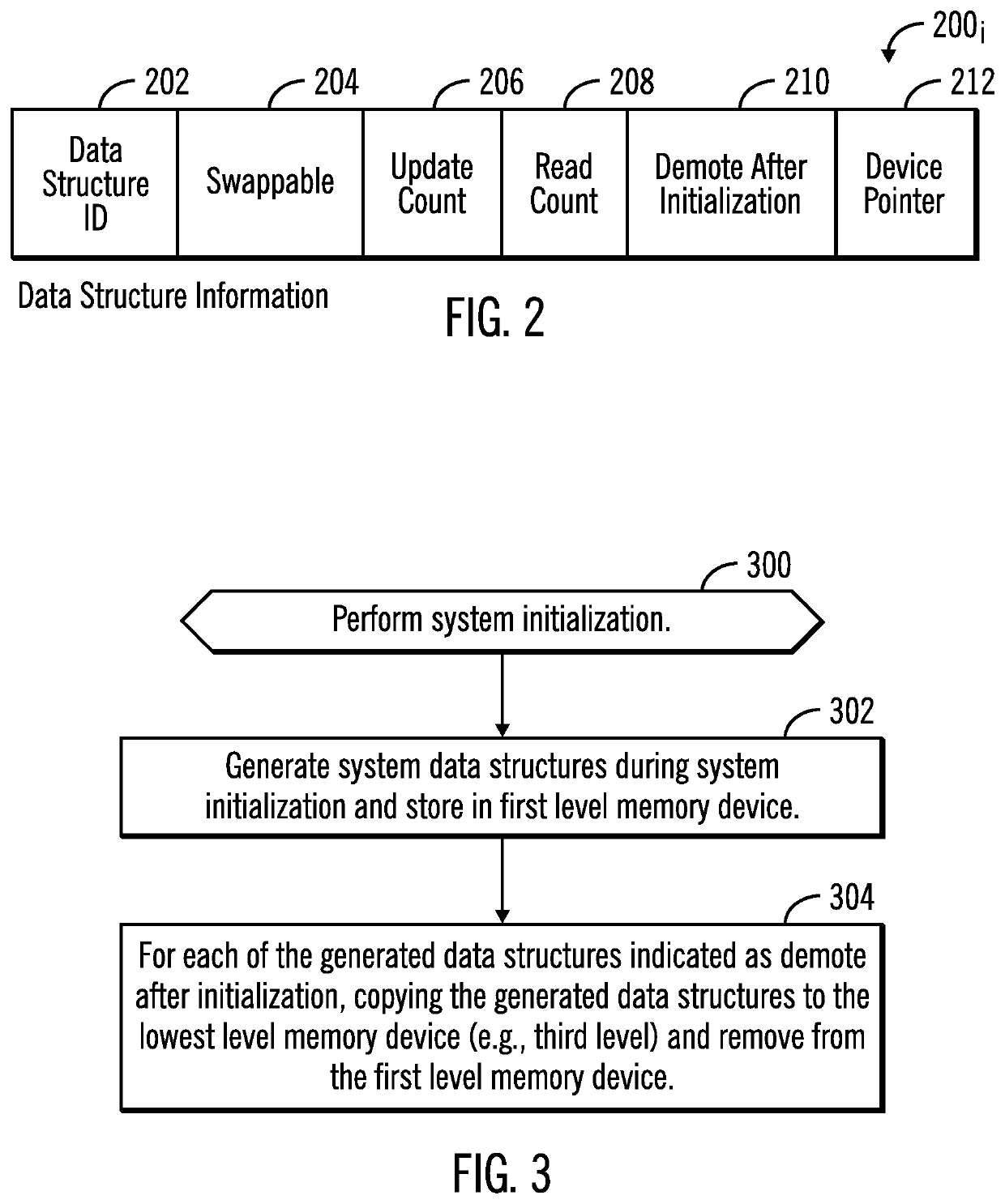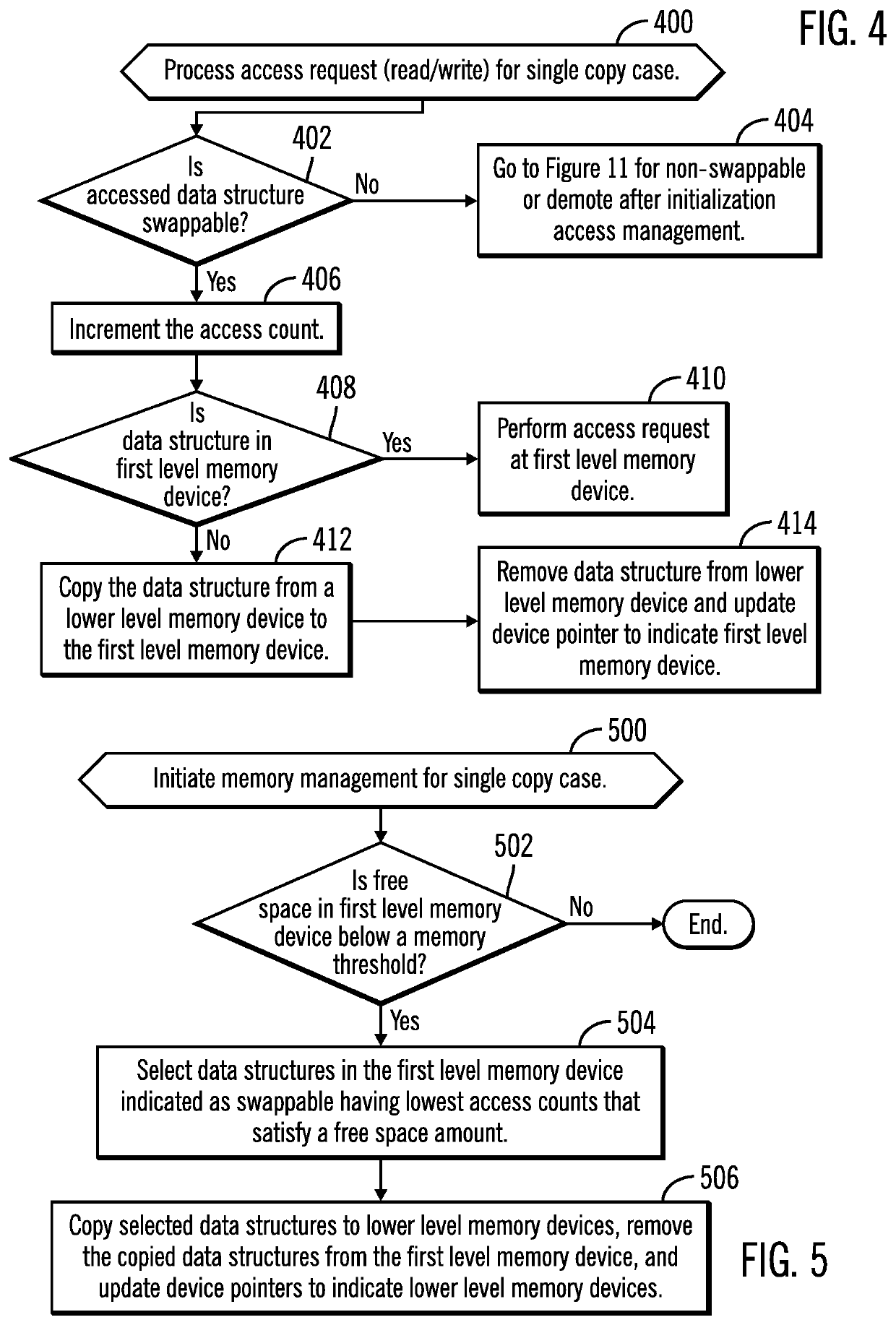Managing swappable data structures in a plurality of memory devices based on access counts of the data structures
- Summary
- Abstract
- Description
- Claims
- Application Information
AI Technical Summary
Benefits of technology
Problems solved by technology
Method used
Image
Examples
Embodiment Construction
[0029]System control structures used to define logical devices in the computing system may be maintained in the main DRAM memory. However, as the DRAM gets to an almost full level, time consuming memory management processes are used to move the data structures in DRAM to a lower level storage, such as a higher latency NAND type flash memory or disk storage.
[0030]Described embodiments provide improved computer technology for managing data structures in a memory subsystem comprised of a plurality of different level memory devices having different characteristics, such as a lowest latency first level memory device, e.g., DRAM, and different higher latency, less expensive lower level memory devices, e.g., NAND flash memory. With described embodiments, access counts are used to determine when to move data structures from the first level memory device to a lower level memory device having higher latency. The access counts may also be used to determine whether to maintain multiple copies o...
PUM
 Login to View More
Login to View More Abstract
Description
Claims
Application Information
 Login to View More
Login to View More - R&D
- Intellectual Property
- Life Sciences
- Materials
- Tech Scout
- Unparalleled Data Quality
- Higher Quality Content
- 60% Fewer Hallucinations
Browse by: Latest US Patents, China's latest patents, Technical Efficacy Thesaurus, Application Domain, Technology Topic, Popular Technical Reports.
© 2025 PatSnap. All rights reserved.Legal|Privacy policy|Modern Slavery Act Transparency Statement|Sitemap|About US| Contact US: help@patsnap.com



